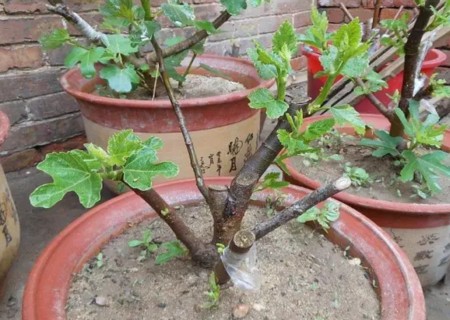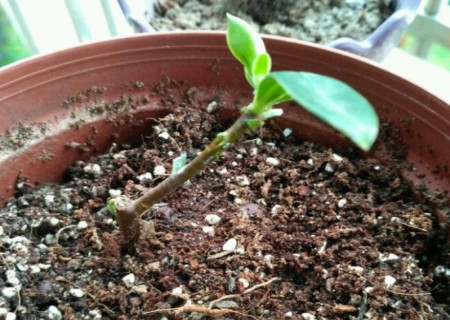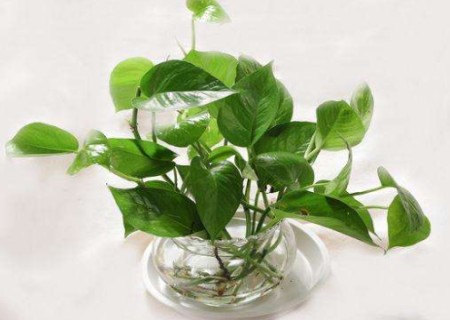The method of fig cuttage propagation-hardwood cuttage
Figs grow luxuriantly, have large leaves and beautiful trees, and are highly ornamental, so they are often used for garden planting and family pot planting. Figs can be propagated in a variety of ways, including cutting, ramet, striping and so on. In contrast, cutting is the most convenient way of propagation, and it can inherit the variety characteristics of the mother plant, and the propagation speed is very fast. Today, the editor will share with you the method of fig cuttings and propagation.

Figs can be propagated by cuttings, but cuttings are divided into hardwood cuttings and tender wood cuttings. In the previous article, the editor has shared the fig cutting technology for you. Today, the editor is going to talk about the technology of cutting through hardwood.
1. Cutting time
Fig hardwood cuttings are usually carried out from March to April in spring.
2. Cuttings selection
Cuttings from 2012 are recommended because such branches are more mature. It is recommended that the cuttings be cut to about 15 cm in length, and there are 2-3 full buds on the branches.
3. Cutting and cutting
When cutting cuttings, the upper part of the branch is cut into a flat mouth from about 1 cm away from the bud, and the cut of the lower part of the branch is cut into an oblique angle of 45 degrees, which can increase the contact area between the rooting part of the cuttings and the soil, which is more conducive to root germination.
4. Cuttings treatment
In order to promote the cuttings to germinate roots quickly and improve the rooting rate, it is recommended that the cuttings be soaked in clean water for half a day to one day before cuttings. The soaking time should be determined according to the degree of dehydration of cuttings. If the cut is bright green, it means less dehydration, the soaking time can be shortened; if the cutting incision appears whitening phenomenon, it means that the branch dehydration is too much, the soaking time needs to be prolonged.
After the branches have been properly soaked in water, the base of the cuttings should be soaked in rooting water for 3 minutes, and the soaking depth should be 2-4 cm. After that, take out the cuttings and set aside to dry.
5. Main points of cutting
The cutting medium of potted figs is recommended to use yellow sand or raw soil, and to ensure that the soil remains moist, the depth of the inserted branches accounts for about 1/3 of the length of the cuttings, and remember to water once after planting the branches.
6. Maintenance and management
As the cold tolerance of fig seedlings is very weak, it is necessary to take measures to prevent cold and keep warm before the advent of winter to avoid frostbite. The easiest way is to cover the cutter with a layer of leaves or dried straw until the cold passes and the plant survives before removing the mulch.
Figs have little demand for fertilizer, but some nutrients can be replenished appropriately in order to promote the rapid growth of figs. After the normal growth period of young plants, they can be sprayed with low concentration compound fertilizer solution dominated by nitrogen fertilizer every month. The amount of topdressing should be controlled correctly according to the growth of seedlings.
Time: 2019-06-08 Click:
- Prev

How high is the survival rate?
Daphne odora, especially Daphne phnom penh, its flowers are beautiful and fragrant, and many pot friends regard it as the preferred flower variety for family potted plants. Daphne odora is propagated by cuttings, which are divided into old branch cuttings and young branch cuttings. So, how high survival rate of daphne cuttings? in this regard
- Next

Hydroponic culture method of green apple pruning
In recent years, modern urban life is often attacked by haze weather, and the inhalation of toxic substances in haze has caused great harm to health. In view of this, people have to buy all kinds of anti-haze products, which naturally promote the hot sale of potted plants such as green pineapple.
Related
- Fuxing push coffee new agricultural production and marketing class: lack of small-scale processing plants
- Jujube rice field leisure farm deep ploughing Yilan for five years to create a space for organic food and play
- Nongyu Farm-A trial of organic papaya for brave women with advanced technology
- Four points for attention in the prevention and control of diseases and insect pests of edible fungi
- How to add nutrient solution to Edible Fungi
- Is there any good way to control edible fungus mites?
- Open Inoculation Technology of Edible Fungi
- Is there any clever way to use fertilizer for edible fungus in winter?
- What agents are used to kill the pathogens of edible fungi in the mushroom shed?
- Rapid drying of Edible Fungi

